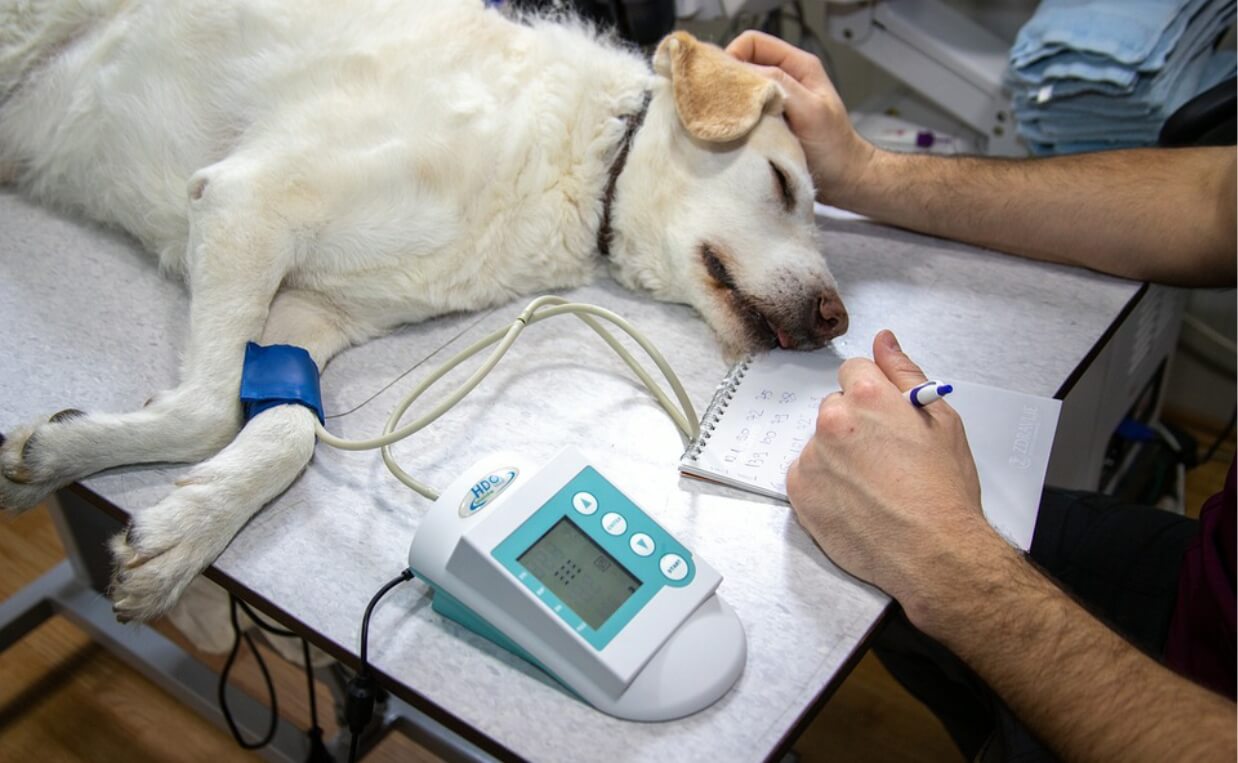
Anemia is a common finding in canine veterinary practice; however, it can be challenging to determine the underlying cause of the condition. Anemia in dogs is not a specific disease, but rather a symptom of another disease or condition. There are many potential causes, making diagnosis difficult. Having a basic understanding of what anemia is and what signs to look for can help with early detection.
What is Canine Anemia?
Anemia refers to the condition when your dog does not have enough red blood cells in his or her bloodstream. Red blood cells are also called hemoglobin. Hemoglobin is essential because it supplies oxygen to the body as well as removes carbon dioxide. Hemoglobin is the protein in the cells that carries oxygen throughout the body.
What Causes Canine Anemia?
If your dog becomes sick or injured, he or she can become anemic. Common causes include:
- Hypothyroidism
- Parasite infestations (hookworms, roundworms, fleas, ticks, etc.)
- Cancer
- Immune diseases
- Canine influenza, parvovirus or another infectious disease
- Poor nutrition

Canine Breeds Prone to Anemia
While any canine breed can develop anemia, certain breeds appear to be more susceptible than others.
The most commonly affected breeds include:
- Irish setters
- Collies
- Doberman pinschers
Hereditary factors are suspected in other breeds, but no genetic basis is yet established. These are:
- Vizsla
- Scottish terrier
- Cocker spaniel
- Miniature schnauzer
- Old English sheepdog.
Anemia has been reported in dogs between the ages of 1 – 13 years. Female dogs are at higher risk than males.

Symptoms of Anemia
Anemia can be tricky to spot. The most obvious symptom is pale pink or white gums. If you notice your dog’s gums are pale, take your dog to the vet for a blood test as soon as possible.
Other signs include:
- Fatigue – running out of energy easily
- Dark or “tarry” stools
- Dark blood in feces or vomit
- Bruising on skin
- Fainting or becoming disoriented due to low oxygen levels in the brain
- As the disease progresses, excess bilirubin will spill over into the urine, causing it to appear dark
How is Anemia Diagnosed?
If you suspect your dog is anemic, you should make an appointment with your veterinarian as soon as possible. Anemia can affect every organ in your dog’s body and can be life-threatening.
Anemia in dogs is diagnosed by performing a blood test. The blood test measures the number of red blood cells in the sample. If anemia is suspected, your veterinarian will recommend an additional test to determine the type of anemia present. There are two types – primary or secondary. Other tests to evaluate the overall health of your dog will also be recommended. These will usually include:
- Biochemical profile
- Urinalysis
- X-rays of the chest and abdomen
- Abdominal ultrasound

Treatment of Canine Anemia
If your dog’s anemia is so severe it is life-threatening, a blood transfusion will be needed. Before giving a blood transfusion, blood samples will be taken for diagnostic testing.
If your dog’s anemia is secondary, treatment will be focused on the underlying cause. If no underlying cause can be determined, or your dog is diagnosed with primary anemia, your dog will most likely respond positively to treatment with immunosuppressive doses of corticosteroids.
Long-Term Prognosis
Most of the time, diagnosis and treatment will resolve anemia in dogs. However, if your dog has an underlying issue like cancer, the underlying disease may not be treatable. Cancer-related anemia is a common complication with various tumor types and can have a negative impact on canine quality of life.
Anemia can be a life-threatening condition requiring emergency treatment and hospitalization. In addition to blood transfusions, fluid therapy may be administered until your dog is stable. Once your dog is stabilized, strict cage rest may be required during recovery. Most dogs will make a full recovery, but some may require life-long treatment. If your dog requires life-long treatment, he or she will need to visit the vet two to three times per year.

Early detection of canine anemia can be life-saving. Make sure your dog is up-to-date on vaccines and other preventable health conditions (like heartworm disease) to help prevent underlying conditions that can cause anemia.
Have you had a dog diagnosed with anemia? What was the underlying cause? What treatment was given? Please share your experience with the rest of the Canine Campus community in the comments below…

 How to Choose the Best Dog Bed for Your Dog
How to Choose the Best Dog Bed for Your Dog 15 Things Every Dog Owner Should Know About Rabies
15 Things Every Dog Owner Should Know About Rabies What Every Dog Owner Should Know About Ear Infections in Dogs
What Every Dog Owner Should Know About Ear Infections in Dogs The Benefits of Bodywork for Your Dog
The Benefits of Bodywork for Your Dog Healthy Easy Homemade Dog Treats
Healthy Easy Homemade Dog Treats






Leave a Reply